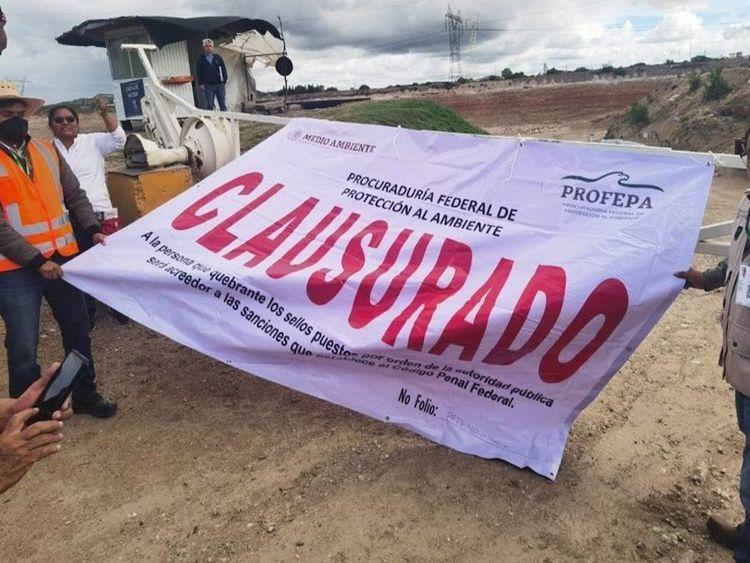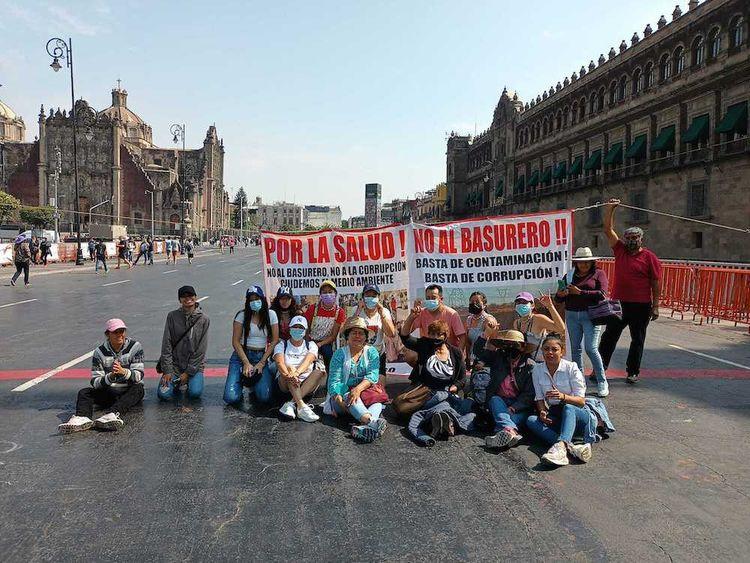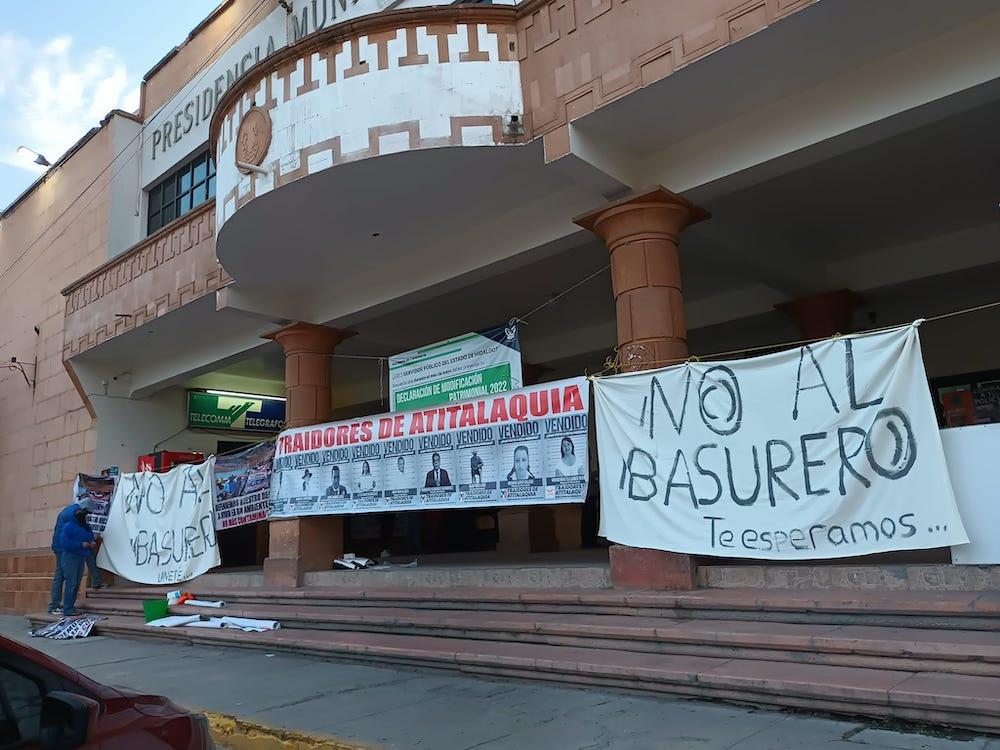One month after the assassination of 50-year-old environmental defender Jesús Bañuelos Acevedo, the sealed tarps of the State Attorney's Office for Environmental Protection (Proespa) officially prevent passage to the garbage dump in Atitalaquiá, Hidalgo.
What had been only a temporary suspension, as clarified by the Ministry of Environment and Natural Resources (Semarnat) in a statement, was officially announced as a closure on Friday, July 22.
Technical studies of air, soil and water are currently being carried out to assess pollution risks. Both because of the months of activity that the landfill had and because of the risks to industrial activity in the area.
This has been one of the main requests of environmental groups: that damage be repaired.
“We know that this is not going to get our partner Chuy back, but at least that the place is repaired. Atitalaquim no longer resists pollution,” said Oscar García Cervantes, an undergraduate professor and member of the No to the Garbage Dump movement in Atitalaquim.
Meanwhile, the investigation into the murder of Jesús Bañuelos and the assault of two other comrades at the hands of an armed group in the early morning of June 20 has made no progress.
Professor Oscar, 62, who is one of the colleagues who was with Jesus when the attack on the sit-in outside the landfill occurred, is also still without protective measures.

Temporary closure of the Atitalakia landfill on June 21. Photo: Profepa.
350 tons per day
The defense that today opposes the Atitalakia landfill gained strength last January. Most of its members are residents of the town of El Cardonal, who saw the news of the inauguration of the Regional Center for the Treatment of Urban Solid Waste (official name) as another blow to the pollution crisis they are experiencing.
Atitalaquila is a small municipality in the south of Hidalgo, but it has more than 40 years of documentation as an environmental emergency.
Its proximity to the Federal Electricity Commission (CFE) thermoelectric plant in Tula; the Miguel Hidalgo refinery of Petrleos Mexicanos (Pemex); the cement plants that incinerate waste; and the food and plastic factories in the industrial corridor is the summary of the cause.
For example, researcher Benjamín Ortíz-Espejel stated that thermoelectric power plants and refineries are the industries that most discharge wastewater into the hydrological system of the Atitalaquia-Tula-Apaxco region. Promoting the contamination of the groundwater tables that feed drinking water wells.
“These are regions called environmental hells, the result of the neoliberal model, of totally disordered industrial management and of the lack of care for the fundamental right that is a healthy environment,” explained María Elena Álvarez Buylla, director of the National Council for Science and Technology (Conacyt), during a seminar to address the problem in 2021.
However, that same year, an operating license was granted to the company Ecological Solution México (Esmex) for waste management in the Atitalaquim landfill and last January the inauguration was held led by Omar Fayad, governor of Hidalgo.
During the four months it was in operation, it received more than 350 tons of waste per day from nine municipalities: Ajacuba, Atotonilco de Tula, Chapantongo, Mixquiahuala, Tepetitlán, Tlaxcoapan, Tlahuelilpan and Tula.
During that same period, the Atitalakia No to the Garbage Dump movement carried out demonstrations, road closures, information campaigns and requests for meetings with authorities.
When they received no response, on May 13, they decided to hold a definitive sit-in outside the garbage dump, until the murder occurred on June 20.
“At no time was the project socialized, nor was there information to provide legal and scientific certainty that this garbage dump is operating properly. It was even requested via transparency but it has been denied from the outset. We knew there was a concession contract, but we didn't have an Environmental Impact Demonstration,” Jesús Eduardo García, legal representative of the movement, said in an interview.

Demonstration outside the National Palace in April. Photo: No to the Garbage Dump Movement of Atitalakia.
Between a political trial
Professor Oscar had a tremor left in his right hand. As if I were nervous all the time. During the interview, he recognizes that he is, he has a hard time remembering what happened, he worries about his family and, at the same time, he affirms that he refuses to live in fear.
“I have a mixed feeling that hours before that night I was talking to Chuy about when this was going to end. And the next day, after his death, Profepa came and closed the garbage dump,” he describes.
The only meeting he believes has been efficient so far is with Semarnat to lay the foundations for environmental studies. But the process is just beginning.
On July 25, three days after the closure of the garbage dump, the Atitalakia No to the Garbage Dump movement organized a rally outside the Municipal Palace to remove a sit-in that had been in place since May 26, as well as to report on the progress of recent weeks.
The uprising is part of an agreement established with the authorities following the fulfilment of the first requests.
“We are not satisfied, but we gave our word if certain things were covered we would get up from this building (Municipal Palace), which will go down in history because of our struggle,” said one of the speakers.
Regarding the environmental studies that have been worked on, there are the tours carried out by the National Institute of Ecology and Climate Change (INECC), which will place air monitors, and the Mexican Institute of Water Technology (IMTA), which built water sampling points.
In addition, a meeting is scheduled in the coming days with the City Council to present a garbage collection project, as well as to work on a reforestation program with flora from the area such as huizache, mesquite and maguey.
Regarding Jesús Bañuelos, the movement insisted that it will continue to pressure the authorities to find the material and intellectual authors of the murder.
Meanwhile, a complaint of impeachment against members of the city council of Atitalaquiá continues before the Congress of the State of Hidalgo.
“The intention of this impeachment complaint is the dismissal and, in due course, the disqualification of the members of the Atitalaquim City Council for serious violations that violate the individual and social guarantees proposed (by the demonstrators),” explained Jesús Eduardo García, who from the legal side hopes they can use all resources to achieve justice.



Comentarios (0)